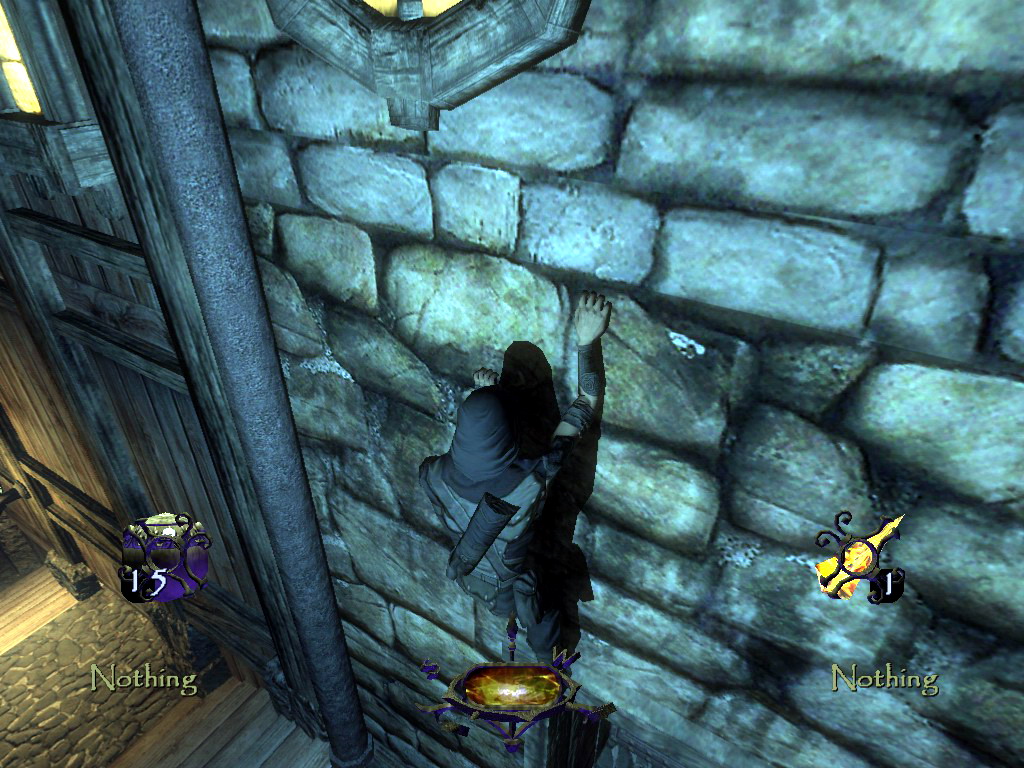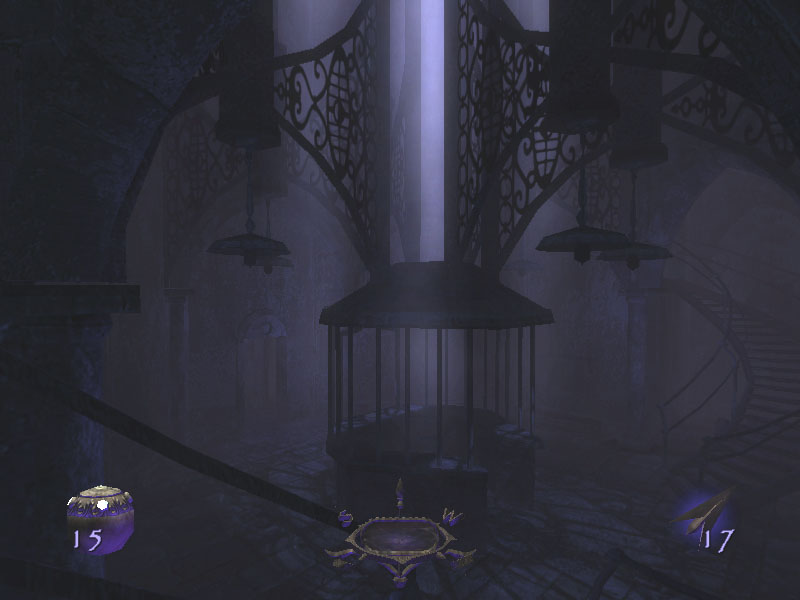Playing a game is a form of communication. Players express their intent and the game provides feedback on the state of the simulated world, quantifying and contextualising player actions.
All forms of communication require the establishment of a common ground, this is done in games by providing both the game and player with a selection of nouns (objects in the world) and verbs (atomic actions). In order to describe their intent and take meaningful actions players modify these verbs with adverbs and combine these adverb-verb pairs with nouns to form sentences. The grammatical rules of these sentences are defined by the rules of the game and the boundaries of the simulation. The actual meaning of these sentences is dependant on the context in which they are used.
The player’s vocabulary is defined by the number of verbs, adverbs and nouns the game makes available to them. The player’s grammar is the manner in which the vocabulary can be used; the adverb “Quietly” can be used with the verb “Walk” to form the composite adverb-verb pair “Quietly-Walk”, but the adverb “Quietly” might not be valid if combined with the verb “Shoot”, “Quietly-Shoot” might not be a valid adverb-verb pair, a valid action.
Players express their intent by constructing a sequence of actions (adverb-verb pairs) acting on objects (nouns) as defined by the rules of the system (the grammar) in a specific context (a sentence).
Let’s consider an example of player vocabulary and grammar in action. If while playing Thief: Deadly Shadows my intent is to creep across a room I need to form a sentence that communicates that goal to the game. I press the buttons corresponding to the adverb “Slowly”, also known as “Creep” (for me Ctrl) and the verb for “Forward” (for me ‘W’, modified by the mouse to define the forward direction) and thereby express my intent to “Slowly-Walk” across the surface in front of me. I tell the game that I want to “Creep across the floor.” I am expressing my intent through an adverb-verb pair and a noun. Sometimes I don’t need to modify the verb and can express my intent simply through a verb and a noun: “Open Door” or “Jump on Crate”, or a noun, a verb and another noun: “Shoot Water Arrow at Torch.”
The vocabulary in Thief: Deadly Shadows, is defined by the tools available to the player, the objects in the world and the actions the player can take in that world.
If the communication between game and player is to remain intact then it follows that the rules of grammar need to remain constant, that is to say that “Open” and “Door” are always valid combinations. However that does not mean that “Open Door” is always valid in the current context. It makes no sense to “Open Door” if there is no “Door” available. The rules defining the interaction between “Open” and “Door” are still valid but the noun “Door” does not exist in that current context and so the sentence makes no sense.
Though care should be taken to ensure that the grammar does not change, without informing the player, games can alter the vocabulary, the dynamics, to change the aesthetic experience of playing the game.
The Shalebridge Cradle, is possibly one of the most unpleasant and tense levels of any game. There are many ways in which this level plays with the expectations of the player, provoking fear and apprehension. The architecture, lighting and other aesthetic elements of the level play a large role, but in strictly mechanic and dynamic terms “Robbing The Cradle” is worth examining for the way it manipulates the player’s vocabulary.
Occurring near the end of the game players visit the Shalebridge Cradle having built up an understanding of the vocabulary and grammar of the world of Thief: Deadly Shadows and already have a range of stock phrases which they can use to interact with, and express their intent to, the world: “Shoot Water Arrow at Torch”, “Use Lockpick on Locked Door.”
Upon entering the Cradle players find that although the rules of grammar have not changed, they are still playing the same game after all, their vocabulary has been dramatically reduced. The Cradle is a world devoid of the usual range of nouns that exist in other portions of the game. There are very few (I hesitant to say no) “Torches”, a very small number of “Doors” and, at least in the first portion of the level, no “Enemies”. This reduction in the available vocabulary is a direct reduction in the options available to the player, a limit on their power. Since this happens at the peak of their understand and ability, it is a discomforting and unpleasant experience; exactly what the Cradle is meant to feel like.
By subtly adjusting the player’s vocabulary and ability to communicate their intent, games can dramatically change the aesthetic experience they provide.


3 replies on “Player Vocabulary.”
Now who said games are not educational? hehe
Thief: Deadly Shadows seems only to limit the player by removing “nouns”, though it is also possible to remove the “verbs”. In The Chronicles of Riddick: Escape from Butcher Bay (if you enjoy Thief you have to play this game), the player is constantly robbed of “verbs” and has to fall back on stealth as weapons are confiscated or destroyed. You would have to be careful not to remove too many of the verbs and nouns though, because it could ruin the sense of accomplishment.
Nice reading. The most obvious example of this that comes to my mind is Monkey Island. The “verbs” are literally written on the interface. And as the player clicks on these actions and then on the “nouns” that a particular context (or place in the game) offers the player, a phrase literally appears on the screen. The more clicks, the longer the sentence gets (as long as the sequence of clicks or verbs and nouns is grammatical in that particular context, as well as within the larger grammar laid out by the game -and common sense, if there’s any in Monkey Island-).